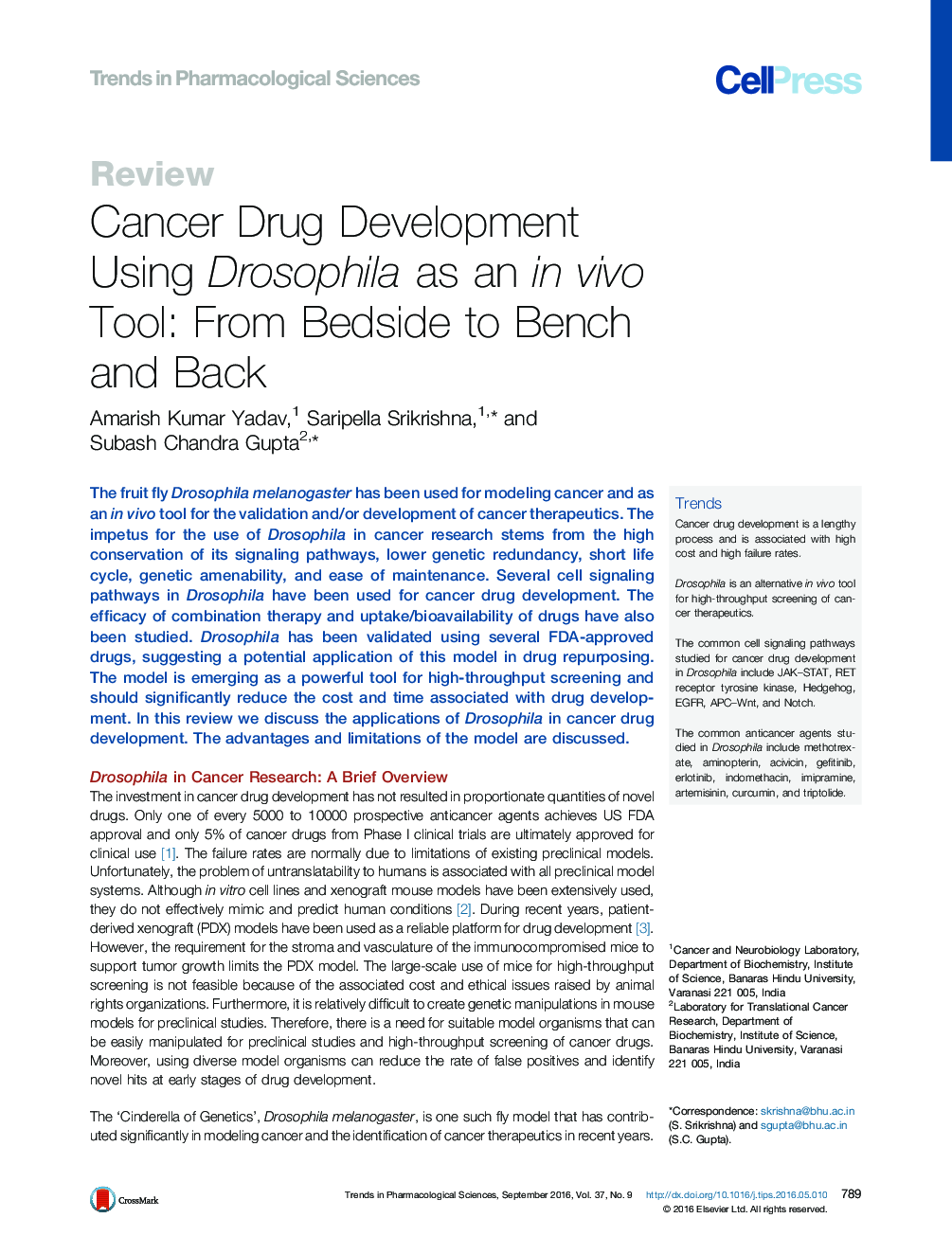| کد مقاله | کد نشریه | سال انتشار | مقاله انگلیسی | نسخه تمام متن |
|---|---|---|---|---|
| 2572393 | 1403238 | 2016 | 18 صفحه PDF | دانلود رایگان |

The fruit fly Drosophila melanogaster has been used for modeling cancer and as an in vivo tool for the validation and/or development of cancer therapeutics. The impetus for the use of Drosophila in cancer research stems from the high conservation of its signaling pathways, lower genetic redundancy, short life cycle, genetic amenability, and ease of maintenance. Several cell signaling pathways in Drosophila have been used for cancer drug development. The efficacy of combination therapy and uptake/bioavailability of drugs have also been studied. Drosophila has been validated using several FDA-approved drugs, suggesting a potential application of this model in drug repurposing. The model is emerging as a powerful tool for high-throughput screening and should significantly reduce the cost and time associated with drug development. In this review we discuss the applications of Drosophila in cancer drug development. The advantages and limitations of the model are discussed.
TrendsCancer drug development is a lengthy process and is associated with high cost and high failure rates.Drosophila is an alternative in vivo tool for high-throughput screening of cancer therapeutics.The common cell signaling pathways studied for cancer drug development in Drosophila include JAK–STAT, RET receptor tyrosine kinase, Hedgehog, EGFR, APC–Wnt, and Notch.The common anticancer agents studied in Drosophila include methotrexate, aminopterin, acivicin, gefitinib, erlotinib, indomethacin, imipramine, artemisinin, curcumin, and triptolide.
Journal: - Volume 37, Issue 9, September 2016, Pages 789–806